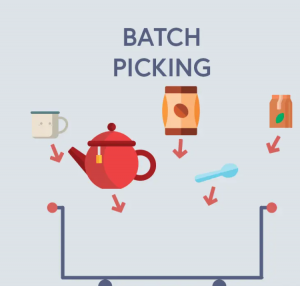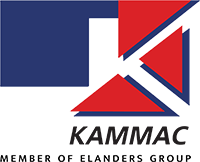Do you need pick and pack help from Kammac’s team?
Take our E-Fulfillment Audit. Answer 10 questions about how your business is working, and see if we can help.What is picking and packing?
Here at Kammac ‘pick and pack‘ is one of the many different warehouse value added services we have to offer. We pride ourselves on offering top-tier pick and pack services tailored to meet the unique needs of every ecommerce business, so what is the picking and packing process and how does it work?What is the definition of pick and pack?
Pick and pack is a fulfilment service that logistics companies like ourselves offer to clients. This service works particularly well for ecommerce companies that receive smaller, specific orders which are then packed and delivered to the consumer.What’s the Kammac difference with pick and pack?
We don’t just offer picking and packing as part of our warehouse value added services. We offer completely flexible help with your business forecasting and planning for logistics. Choose warehouse storage solutions or ecommerce fulfillment services with our team. We’ll work out how much space you need and how much it’s going to cost, based on:- how many products you need to store
- what the type of product of
- how long you need the space for
- the square space you need
We create an effective warehouse picking
In order to succeed with this type of fulfilment Kammac uses its efficient system, experienced warehouse employees and expertise in warehouse management in order to create a smooth and stress free experience for our clients. We have years of experience in managing complex logistics networks with the ability to optimise a clients logistics operation and ensure that they’re efficient and effective. By improving efficiency, businesses can reduce lead times, improve order accuracy, and increase customer satisfaction.What is the picking process?
The standard pick and pack process follows four simple primary steps:- Stock receiving – The customer sends their inventory to one of our warehouses to be stored and prepared for our pick and pack process.
- Order receiving – The customer integrates their E-commerce channels to our warehouse systems which generates a packing slip when an order is placed online.
- Order packing – Our warehouse team then picks the requested item, packs it securely and labels it for delivery.
- Order shipping – The orders will then be prepared for collection, ready to be sent out to your customers.
Why should your business use Kammac’s pick and pack services?
Having an efficient logistics company running your picking and packing system will eliminate the need for repacking during the shipping process. This will massively lower the time it takes to fulfil your customers orders. Due to the simplicity and speed, ‘pick and pack’ is the preferred option for the majority of Ecommerce sellers who deliver small orders.What is batch picking?
Batch picking is a method of picking items and orders simultaneously and grouping them together in one trip round the warehouse. This makes warehouse packing a simple and efficient process.
What does the batch picking and packing process look like?
When done correctly it should mimic the steps below.- Each warehouse picker is assigned to a batch which contains multiple orders.
- The picker moves into the warehouse and picks all the orders in one sweep.
- All the items are returned to the packing desk or the packing station.
- A new batch is received and the process starts over.
What resources can I see from Kammac on pick and pack?
Download our ‘Managing Peak Demand’ brochure all about how we help businesses manage peak times through award winning ecommerce fulfillment services all over the UK.Do you need pick and pack help from Kammac’s team?
Take our E-Fulfillment Audit. Answer 10 questions about how your business is working, and see if we can help.FAQS – Pick and Pack Logistics
The pick and pack fee is what you pay to have an item or items picked from storage and packaged for shipping. Chat to us if you’d like to find out our fees.
This picking and packing method is the most efficient route to get a high volume of customer orders out of the warehouse and delivered. We can get you a warehouse up and running very quickly, sometimes within 48 hours.
We have a completely tailored system to not only increase efficiency across multiple zones in the warehouse, but so you can focus on making more money as a business. We’ll help you forecast too so you can meet customers expectations, get more products shipped, and make more profit.
Warehouse operations are the backbone of any successful e-commerce or retail business. Efficient picking and packing processes not only ensure timely deliveries but also play a pivotal role in enhancing customer satisfaction.
Here are some best practices for warehouse picking and packing:
- Efficient Picking Routes: Travel during picking constitutes 55% of the total time. Planning efficient routes can drastically reduce this.
- Inventory Storage Strategy: Store high-turnover products near the packing station. The quicker a picker can access popular products, the faster the process.
- Barcode Scanning: Implement mobile barcode scanning to enhance picking accuracy and reduce errors. It also suggests optimal picking routes.
- Implement a WMS: A Warehouse Management System (WMS) automates workflows, optimizes stock control, and manages locations, ensuring smooth operations as sales volume grows.
Zone, batch and wave picking are the 3 main types of warehouse picking and packing.
Zone picking is an order picking process where the warehouse is divided into distinct zones. It’s often referred to within the logistics and warehousing industry. Each picker is assigned to a specific zone and is responsible for picking items only from that designated area.
This method is particularly beneficial in large distribution centres with a diverse range of SKUs (Stock Keeping Units). Zone picking aims to minimise the travel time of pickers.
This type of warehouse picking increases efficiency, dividing the warehouse into zones based on product types or other characteristics. So you can get more orders through the door.
Wave picking is a specialised order fulfillment strategy employed in warehouses and distribution centres. This method involves grouping multiple orders together based on specific criteria, such as SKU, carrier pickup times, or customer preferred shipping schedules.
By doing so, it aims to optimise the process, reduce travel time for pickers, and enhance overall warehouse efficiency.
In wave picking, orders are organized into “waves” using a WMS. The WMS categorizes orders according to predetermined requirements and subsequently generates picking lists for each worker.
Warehouse pickers then follow these lists, pulling items for multiple orders simultaneously. This consolidated approach minimises the need for pickers to traverse the warehouse multiple times for individual orders.
Pick and pack is a form of order fulfilment that is frequently used by 3PL companies. The logistics company will pick, pack and deliver the item on behalf of the client’s business.
A pick and pack warehouse is one that has inventory stored in. Then when the customer places an order, the stock gets picked from the warehouse shelves, and packed by the warehouse operations team or by automated systems.
A packing list is a document included with a shipment of goods. A packing list is also known as a shipping list, waybill, bill of parcel, unpacking note, packaging slip, delivery docket, delivery list, or manifest.
It provides details about the contents of the package and is used to inform all parties, including transport agencies, government authorities, and customers, about the package’s contents. Here’s a more detailed breakdown:
- Inventory Management: Helps shippers and receivers track the contents of a shipment.
- Verification: Allows the recipient to verify that the correct products have been shipped and that the shipment is complete.
- Customs Clearance: Used by customs authorities to check the contents of international shipments.
- Protection: In case of disputes, it can serve as evidence of what was shipped.
A picking list, also known as a pick list or pick ticket, is a document used in the warehousing and order fulfillment process.
It provides detailed information to warehouse workers (often referred to as “pickers”) about the items that need to be collected from the high shelves to fulfill a specific order.
As technology advances, warehouses must adapt to stay competitive. Solutions like mobile barcode scanning and cloud-based WMS are becoming essential to the order fulfillment process. With industry giants constantly innovating, staying updated with the latest best practices is crucial.
Email [email protected] to find out more, or get in touch via our pick and pack services.
We offer lots of warehouse value added services as well as pick and pack services including:
- Contract packing
- Repackaging in a warehouse
- Shrink wrapping
- Gift packing
- Kitting

